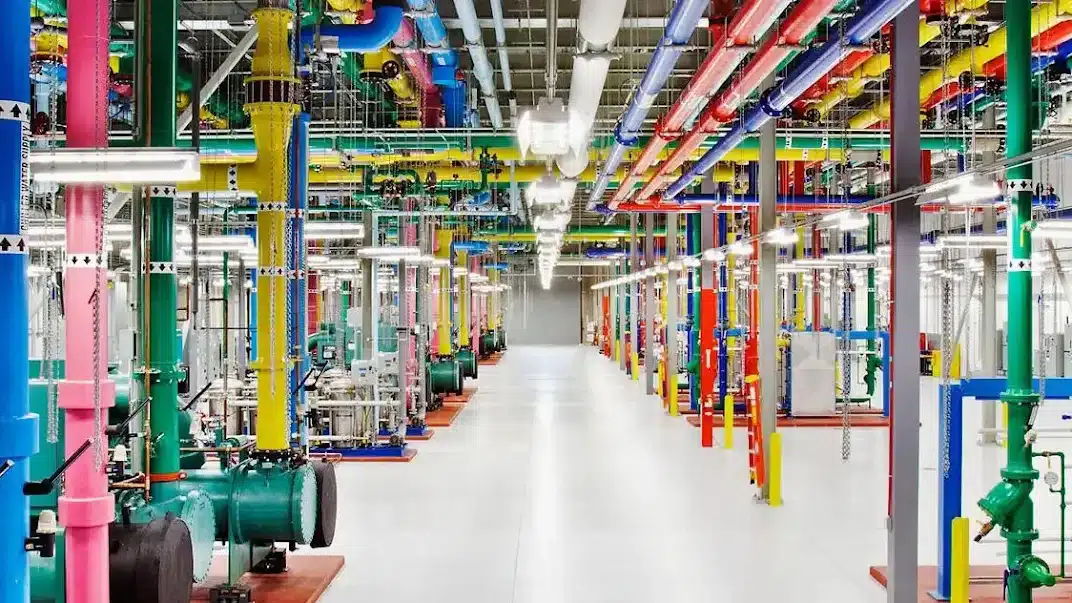In the current discourse surrounding pressing global issues, two topics consistently emerge at the forefront: AI and climate change. These two seemingly distinct subjects are more deeply intertwined than one might initially think. Could AI be the key to mitigating and even solving the escalating issue of climate change?
Climate Change Simplified
A climate report by NOAA highlights a 1.62-degree Fahrenheit (~1 degree Celsius) increase in Earth's average surface temperature since the late 19th century. This is primarily due to human emissions. The result? More extreme regional temperatures, snow, and sea ice reduction, intense rainfall, and disrupted habitats for plants and animals. Importantly, land is heating up more rapidly than the oceans, with the Arctic at the forefront. Notably, this warming trend has sped up considerably over the past few decades.
![Global average surface temperature [Climate Change: Global Temperature, climate.gov]](https://cdn.prod.website-files.com/68624244a4e6c93a7178a541/686e4e05f885c01fdc39b14d_global-average-temperature-1024x592.png)
Climate change is an undeniable reality that affects every individual, region, and nation on Earth. However, it is a quintessential example of a public good, which means that it's a resource we all share, but no single entity can claim ownership or bear the full responsibility for its well-being.
Governments typically provide public goods like roads, electricity, military defense, and more. However, dealing with climate change is somewhat different. It's a global issue that's vast in scale and complex in nature, making it a daunting challenge for any single entity to tackle.
The Role of Government and Nonprofits in Climate Change
Governments and supranational organizations usually shoulder the responsibility of managing public goods. However, the complexity, scope, and urgent need for climate change solutions sometimes outstrip these entities' capacities.
With various challenges to deal with, such as poverty and public unrest, governments often find their resources stretched thin. The result is the inability to dedicate the necessary focus and resources to combat climate change effectively.
Nonprofit organizations have stepped in to bridge the gap, often focusing their efforts on public goods that government entities struggle to manage. But despite these contributions, the scale of the climate crisis calls for solutions that exceed the capacity of nonprofits.
So, if governments and nonprofits can't do it alone, who can help solve climate change? Maybe AI is the solution here.
Can AI Rise Against Climate Change?
The ubiquitous and transformative influence of Artificial Intelligence has earned acclaim across a multitude of sectors. From revolutionizing industries to simplifying daily tasks for knowledge workers, AI's potential seems boundless. One exciting proposition is that with AI advancements, we might be able to surmount the climate change obstacle.
AI and climate change might initially seem unrelated, but the transformative potential of AI could give us the tools we need to address climate change more effectively. By optimizing processes, predicting effects, and providing alternative solutions, AI can help us gain a more comprehensive understanding of our climate and develop effective strategies to mitigate change.
For instance, Team-GPT has been developing innovative AI features that can significantly aid teams fighting climate change. By assisting with various initiatives and daily tasks, these features can speed up processes and allow teams to focus on the main goal. Here are a few use cases:
1. Public Awareness and Education
Generate informative content to educate the public on climate change issues and the importance of sustainable practices.
2. Data Analysis and Reporting
Assist in processing and interpreting large datasets related to climate change, helping scientists and researchers identify trends and patterns.
3. Facilitating Collaboration
Enhance communication and collaboration among climate scientists, policymakers, and activists by aiding in the creation of clear, concise, and accurate communication materials.
4. Language Translation
Translate climate change materials into multiple languages, making information more accessible globally.
5. Behavioral Insights
Analyze social media and public opinion to provide insights on how to better communicate climate change messages to different audiences.
Current Applications of AI in Climate Change Mitigation
AI is already being used in various ways to help address climate change. For example, in the field of renewable energy, AI algorithms can optimize energy consumption and contribute to energy efficiency, reducing CO2 emissions in the process.

Google's DeepMind, for instance, has used machine learning algorithms to reduce the amount of energy used for cooling their data centers by 40%. This demonstrates how AI can make existing processes more eco-friendly.
Similarly, Microsoft has implemented AI solutions in their farming operations, increasing crop yields while minimizing the use of water resources. This shows another practical application of AI in enhancing sustainability.
The Potential Future Applications of AI in Tackling Climate Change Issues
In the future, integrating AI with climate change initiatives could unlock even greater possibilities. AI could be used to model and predict climate change patterns more accurately, leading to more effective strategies and policies. It could also be used to develop advanced carbon capture technologies or optimize recycling systems.
Moreover, AI can help us foresee the potential implications of climate change on global populations. By analyzing vast amounts of data, AI can predict the likely effects of climate change, helping us prepare and adapt more efficiently.
AI and Climate Change: A Double-Edged Sword?
While AI holds immense potential in the fight against climate change, it's not without its downsides. One significant concern is that AI systems often require vast amounts of energy. This has led some critics to suggest that AI could be a disaster for the climate.
However, with ongoing developments in AI optimization and the move towards renewable energy sources, we can hope to mitigate these effects. Ultimately, the challenge lies in leveraging the power of AI for climate change mitigation responsibly.
Considering the current state of our world, AI's potential benefits in combating climate change outweigh the potential risks. Therefore, it is crucial to continue exploring and refining the intersection of AI and climate change.
Looking Forward
In the grand scheme of things, AI and climate change may not be the bane of each other's existence but rather allies in the monumental task of preserving our planet. The continuous evolution of AI offers a beacon of hope for more effective climate change solutions. But, as with all powerful tools, it must be used responsibly and sustainably.
The integration of AI and climate change initiatives could potentially lead to an era where our environment is better managed, thus establishing a more secure and sustainable future.

